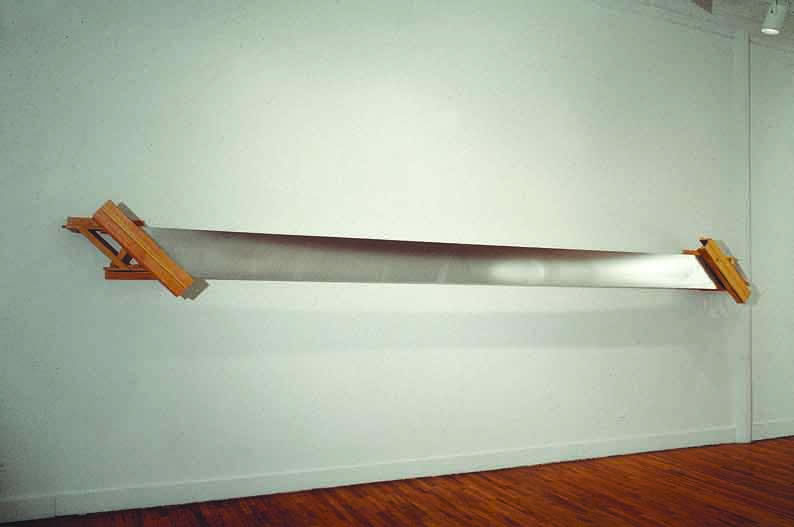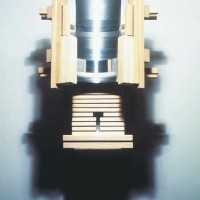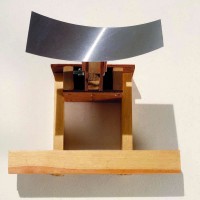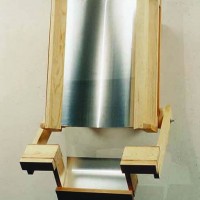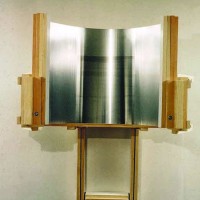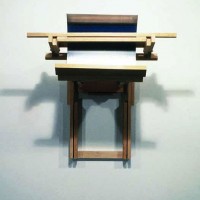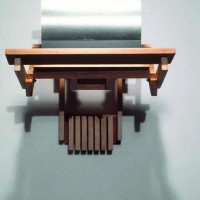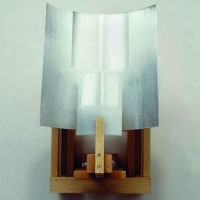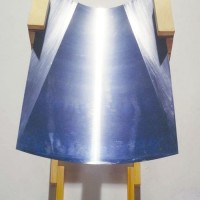Ronald Bladen: A Personal Reflection
Sometime in the 80’s I saw a show of Ronald Bladen’s recent sculpture. Moved to write about the show, Raphael Rubinstein and I collectively wrote a response for Flash Art Magazine. The exhibition was odd, fitting into neither his own oeuvre nor the prevailing artistic concerns of the time. Since then, my memory of this exhibition and Bladen’s determination to follow his own vision has increased in importance and become a personal touchstone.
Initially the sculptures reminded me of a French easel, wooden slats joined precisely to hold a curved piece of sheet metal in place. I remember being struck by the overbearing nature of the wooden structure, but gradually saw its purpose: an improbable support for a thin beam of light, which reflected precisely down the center of the curved aluminum. I was surprised that the clunky, elaborate, almost melodramatic construction was erected simply to capture one fleeting strand of light.
Frequently the reflections from gallery lighting are to be ignored or avoided, you look past the glare of a frame’s glass to see the art behind. In this instance, the reflection is the art. Of course the wood and metal sections of the sculpture are more than just a frame, but they are not the focus of the art experience. They are the necessary prerequisite for the art, much like a mold is to a finished sculpture. But molds are kept in the workshop and not displayed in an exhibition. So why include the wooden structures? Why are they so prominent? Could he not have figured out a way to hide the structure and foreground the curved metal, more elegantly and concisely?
The impetus behind the Bladen pieces is to impel us to pay attention, to guide our sight line until it runs parallel with his own. The line of light we see reflecting off the metallic surface is a reference to a light Bladen saw often on a still body of water. (I believe he saw this on a lake close to his studio or home.) The artist, in an urge to re-present a specific visual experience to others, went to elaborate lengths to connect with his viewer. He desires a shared experience, saying: “Look at this. Look at this… with me.” At the same time he wishes to reveal the sweat and tears required to create a shared experience and does so with the labor-intensive wooden structure. He adds, “Look at the work we must do to mutually pay attention.”
But our attentiveness to Bladen’s vision must be voluntary, unforced. His sculpture can only suggest that we linger over the shimmering band of light, for he does not want to create an army of mini-me’s seeing what he sees in mental lock step. Though I never knew him personally, with this show he became my teacher through example. His willingness to leave the well worn path of his acclaimed sculpture to work out his relatively obscure preoccupations served as a catalyst for me to be equally forthright. Bladen’s example encouraged me to follow my own preoccupations without yielding to the prevailing ideology. His insistence that art was a tool for creating shared experience —a vehicle for paying attention together—helped me navigate my own peculiar road towards becoming an artist.
You can see more of Ronald Bladen’s work at the Loretta Howard Gallery website.
